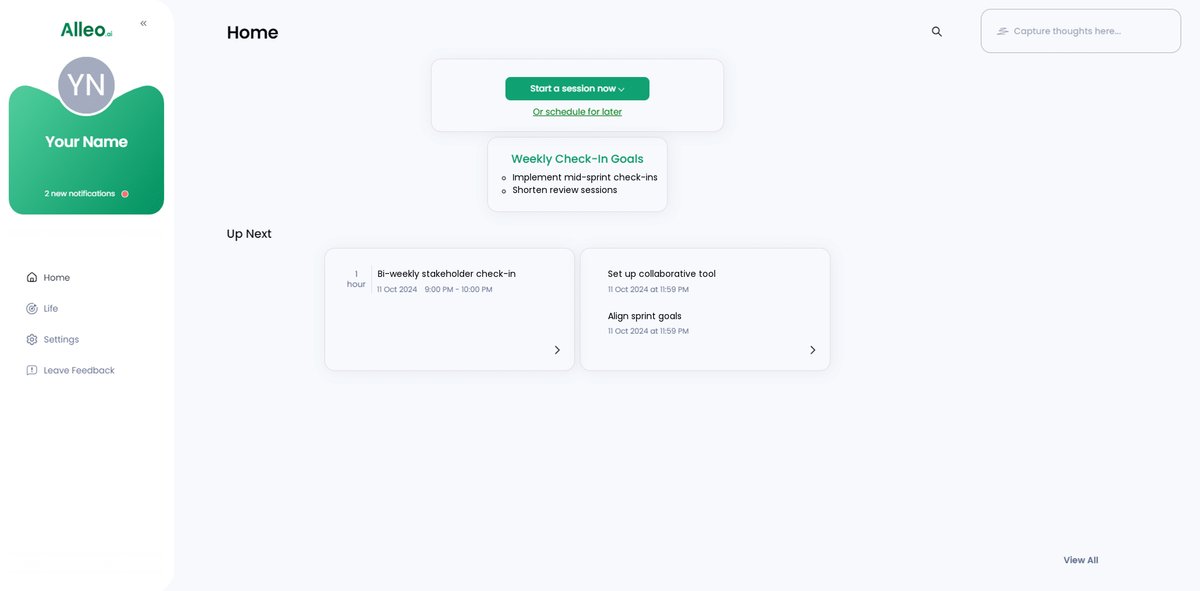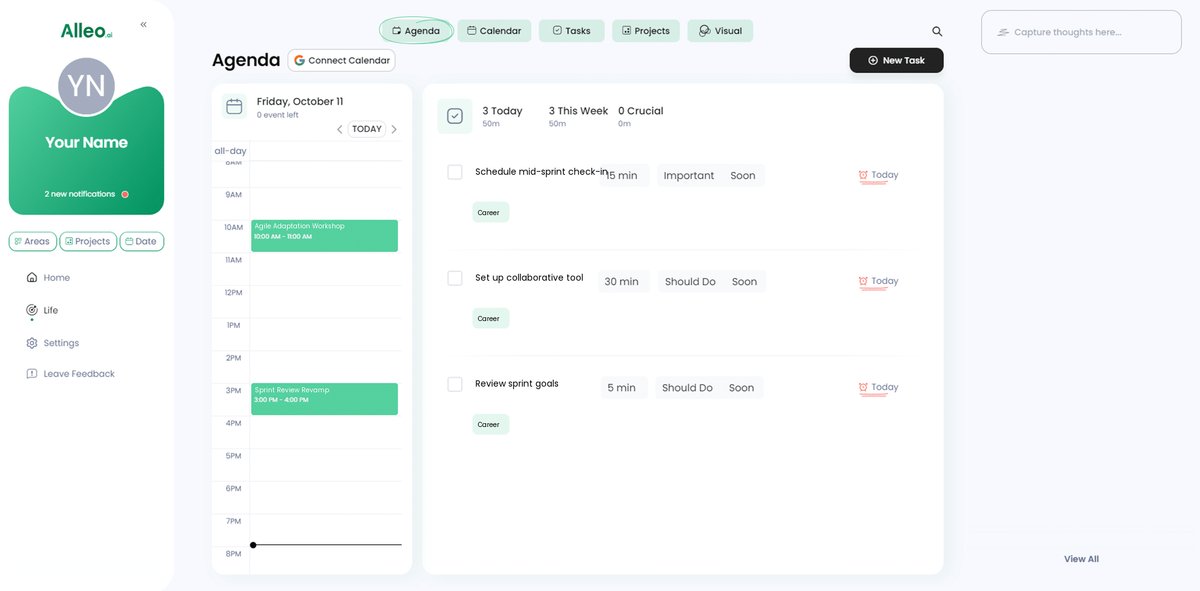Mastering Agile Sprint Reviews: Adapting for Frequent Stakeholder Interaction
What if your agile team could adapt Sprint Reviews to suit the frequent availability of stakeholders?
As a life coach, I’ve helped many professionals navigate similar challenges. In my experience, frequent stakeholder interaction can streamline feedback and requirement clarification, which is crucial when adapting Sprint Reviews for stakeholders. Implementing agile sprint review best practices can significantly improve stakeholder engagement in agile projects.
In this article, you’ll discover actionable strategies to adapt Sprint Reviews for stakeholders. We’ll cover mid-sprint check-ins, shorter review sessions, and collaborative tools that facilitate continuous feedback loops in scrum. These methods can be particularly useful when adapting sprint reviews for remote teams and improving sprint review effectiveness.
Let’s dive in and explore how to balance sprint goals with stakeholder requests through effective sprint demo alternatives and frequent stakeholder communication techniques.
Understanding the Challenges of Traditional Sprint Reviews
Imagine your product owner is available daily, making the traditional two-week Sprint Review seem unnecessary. Many clients initially struggle with maintaining effective stakeholder engagement in agile projects in such scenarios.
In agile development, timely feedback is crucial. Delaying feedback until the end of a two-week sprint can be problematic, highlighting the need for adapting sprint reviews for stakeholders.
When product owners are always available, waiting two weeks for a Sprint Review can feel like an eternity. Several clients report that this delay hinders timely decision-making and course correction, emphasizing the importance of continuous feedback loops in Scrum.
To address this, we need to rethink the traditional Sprint cycle. It’s essential to ensure stakeholders remain engaged without overwhelming the team, which may involve exploring sprint demo alternatives and improving sprint review effectiveness.
Are your current processes truly aligning with the fast-paced nature of your projects and incorporating stakeholder input mid-sprint?
If not, it’s time for a change in how you’re adapting sprint reviews for stakeholders.

Strategizing for Frequent Stakeholder Interaction
Overcoming this challenge requires a few key steps. Here are the main areas to focus on to make progress when adapting sprint reviews for stakeholders:
- Implement mid-sprint stakeholder check-ins: Schedule bi-weekly check-ins to review progress and gather feedback, incorporating stakeholder input mid-sprint.
- Host shorter, more frequent review sessions: Transition to weekly reviews, keeping them concise and focused, improving sprint review effectiveness.
- Use collaborative tools for ongoing feedback: Utilize agile collaboration tools for sprint reviews like Jira or Trello for real-time updates and continuous feedback loops in scrum.
- Align sprint goals with stakeholder priorities: Regularly set and review goals to ensure alignment, balancing sprint goals with stakeholder requests.
Let’s dive in!
1: Implement mid-sprint stakeholder check-ins
Introducing mid-sprint stakeholder check-ins is crucial to keep feedback continuous and up-to-date, effectively adapting sprint reviews for stakeholders.
Actionable Steps:
- Schedule bi-weekly check-ins with stakeholders to review progress and gather feedback, improving sprint review effectiveness. Ensure these meetings are concise, no longer than 30 minutes.
- Create a structured agenda for each check-in to focus on key updates and feedback. Use a template to maintain consistency and productivity, following agile sprint review best practices.
- Assign a team member to document feedback and action items during check-ins. This ensures accountability and follow-up on stakeholder input, enhancing stakeholder engagement in agile projects.
Benefits of mid-sprint check-ins include:
- Enhanced communication and alignment
- Timely course corrections
- Increased stakeholder engagement
Explanation:
These steps matter because they ensure that feedback is timely and relevant, which is vital for agile development. Regular check-ins align with the iterative nature of agile, allowing for course corrections without waiting for the end of a sprint, effectively incorporating stakeholder input mid-sprint.
According to recent studies, frequent stakeholder interaction significantly improves team effectiveness and product value.
By maintaining regular communication, you can adapt quickly to changes and keep your project on track, establishing continuous feedback loops in scrum.

2: Host shorter, more frequent review sessions
Hosting shorter, more frequent review sessions is essential for agile teams to maintain continuous progress and stakeholder alignment when adapting sprint reviews for stakeholders.
Actionable Steps:
- Transition to weekly review sessions to address progress and gather feedback. Keep these sessions concise, around 15-20 minutes, as part of agile sprint review best practices.
- Rotate responsibilities among team members to present updates during review sessions. This fosters engagement and shared ownership, enhancing stakeholder engagement in agile projects.
- Use visual aids like Kanban boards or charts to illustrate progress and challenges. Visual tools enhance understanding and communication, especially when adapting sprint reviews for remote teams.
Explanation: These steps matter because they ensure continuous feedback loops in scrum and keep stakeholders engaged without overwhelming the team.
Regular, shorter reviews help teams adapt to changes quickly and stay aligned with stakeholder priorities, improving sprint review effectiveness.
According to Maarten Dalmijn’s guide, focusing on outcomes rather than outputs during reviews enhances value delivery.
This approach ensures your agile team remains responsive and aligned with stakeholder needs, incorporating stakeholder input mid-sprint.

3: Use collaborative tools for ongoing feedback
Implementing collaborative tools helps maintain continuous feedback and enhances stakeholder engagement in agile projects, crucial when adapting sprint reviews for stakeholders.
Actionable Steps:
- Implement collaborative platforms like Jira or Trello for real-time feedback and updates. Ensure all team members and stakeholders have access and are trained on these tools, facilitating agile sprint review best practices.
- Set up automated notifications for key project milestones and updates. This keeps everyone informed without the need for constant manual updates, improving sprint review effectiveness.
- Encourage stakeholders to leave comments and suggestions directly on task cards or project boards. This creates a continuous feedback loop in scrum and fosters a collaborative environment.
Key features to look for in agile collaboration tools for sprint reviews:
- Real-time update capabilities
- User-friendly interface
- Customizable workflows
Explanation: These steps are essential because they ensure that feedback is timely and relevant, which is vital for adapting sprint reviews for stakeholders and agile development.
Real-time updates and continuous feedback help teams stay aligned with stakeholder expectations, incorporating stakeholder input mid-sprint.
According to Scrum.org, using collaborative tools can significantly improve transparency and communication within agile teams, essential for adapting sprint reviews for remote teams.
This approach ensures your agile team remains adaptable and responsive to stakeholder needs, balancing sprint goals with stakeholder requests.

4: Align sprint goals with stakeholder priorities
Aligning sprint goals with stakeholder priorities ensures that your agile team remains focused on delivering value while adapting sprint reviews for stakeholders.
Actionable Steps:
- Conduct regular goal-setting sessions with stakeholders: Use SMART criteria to ensure goals are Specific, Measurable, Achievable, Realistic, and Timely. This keeps everyone aligned and improves sprint review effectiveness.
- Prioritize tasks and features based on stakeholder input: Maintain a dynamic product backlog that reflects current priorities and adjustments. This keeps the team focused on stakeholder engagement in agile projects.
- Review and revise sprint goals at the end of each sprint: Use outcomes and stakeholder feedback to ensure continuous alignment and adaptability in the development process, incorporating stakeholder input mid-sprint.
Best practices for goal alignment and adapting sprint reviews for stakeholders:
- Clearly communicate priorities using agile collaboration tools for sprint reviews
- Regularly reassess and adjust through continuous feedback loops in scrum
- Involve all key stakeholders using frequent stakeholder communication techniques
Explanation: These steps matter because they ensure that your team’s efforts are aligned with stakeholder expectations, which is crucial for agile success. According to Scrum.org, aligning goals with stakeholder priorities enhances value delivery and adaptability.
This approach ensures your agile team remains focused on delivering what matters most, while balancing sprint goals with stakeholder requests and considering sprint demo alternatives when necessary.

Partner with Alleo to Enhance Your Sprint Reviews
We’ve explored the challenges of adapting Sprint Reviews for stakeholders and frequent stakeholder interaction. Did you know you can work directly with Alleo to streamline this process and improve sprint review effectiveness?
Set up an account with Alleo and create a personalized plan for adapting sprint reviews for stakeholders. The AI coach will guide you through mid-sprint check-ins, shorter reviews, and collaborative tools, helping you implement agile sprint review best practices and enhance stakeholder engagement in agile projects.
Alleo’s coach will follow up on your progress, supporting continuous feedback loops in scrum. They’ll handle changes and keep you accountable via text and push notifications, ideal for adapting sprint reviews for remote teams and incorporating stakeholder input mid-sprint.
Ready to get started for free? Let me show you how to leverage agile collaboration tools for sprint reviews!
Step 1: Log In or Create Your Account
To begin adapting your Sprint Reviews with Alleo’s AI coach, Log in to your account or create a new one to access personalized guidance on implementing mid-sprint check-ins, shorter review sessions, and collaborative tools.

Step 2: Choose “Building better habits and routines”
Select “Building better habits and routines” to address the challenges of adapting Sprint Reviews for frequent stakeholder interaction. This goal will help you establish consistent practices for mid-sprint check-ins, shorter review sessions, and collaborative feedback, aligning your team’s workflow with stakeholder priorities.

Step 3: Select “Career” as Your Focus Area
Choose “Career” as your focus area to align your agile practices with professional growth, helping you adapt Sprint Reviews for better stakeholder engagement and team productivity.

Step 4: Starting a coaching session
Begin your journey with Alleo by scheduling an intake session, where you’ll discuss your agile team’s challenges and set up a personalized plan for adapting Sprint Reviews to frequent stakeholder interactions.

Step 5: Viewing and managing goals after the session
After your coaching session, open the Alleo app to find your discussed goals prominently displayed on the home page, allowing you to easily track and manage your progress in adapting Sprint Reviews for frequent stakeholder interaction.

Step 6: Adding events to your calendar or app
Track your progress in adapting Sprint Reviews by adding key events like mid-sprint check-ins and shorter review sessions to your calendar or the Alleo app, allowing you to monitor your team’s progress and stay aligned with stakeholder priorities.

Empowering Your Agile Team for Success
With these strategies for adapting Sprint Reviews for stakeholders, you can transform how your team interacts with stakeholders. Frequent check-ins, shorter reviews, and agile collaboration tools for sprint reviews will keep everyone aligned.
Your team’s success hinges on timely feedback and clear communication. By adapting your Sprint Reviews, you ensure continuous feedback loops in scrum and stakeholder satisfaction. Improving sprint review effectiveness is key to balancing sprint goals with stakeholder requests.
I understand the challenges you face in stakeholder engagement in agile projects. That’s why Alleo is here to help with agile sprint review best practices.
Try Alleo for free. Let’s make your agile journey smoother and more effective, whether you’re adapting sprint reviews for remote teams or exploring sprint demo alternatives.
You’ve got this!